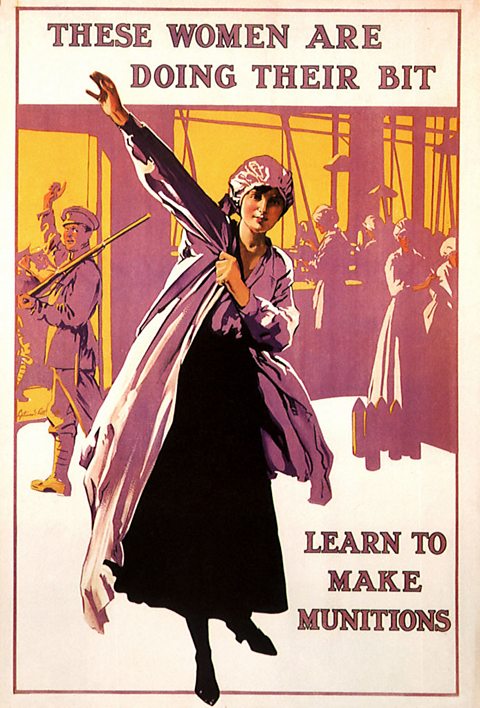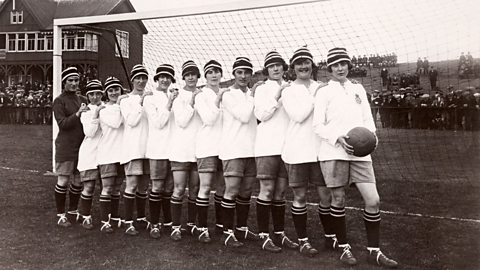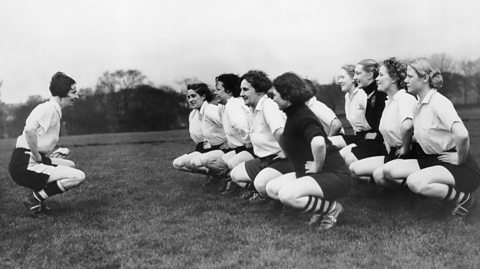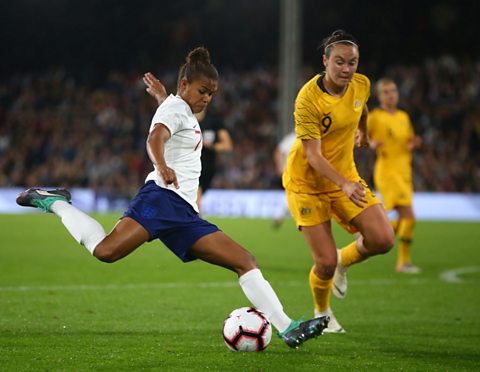A big one, as it turns out.
Today you can watch women’s football on most major TV channels, and England, Wales, Scotland and Northern Ireland compete all over the globe in international tournaments.
But did you know women’s football dates as far back as the 1800s, and World War One played a huge part in making it popular?
Lots of women’s football games in the early 1900s actually attracted bigger crowds than the majority of men’s games in the Premier League today. Here’s a brief snapshot of its history.

When the war broke out, many national sports leagues, including hockey and cricket, suspended play. A large part of this was down to the fact their players were recruited to fight in the war.

The Football League though, decided to go ahead with the 1914/15 season. The national Football Association (FA) received huge amounts of criticism for this, and was accused of putting money ahead of patriotism and national safety.
After that season ended, the FA too decided to stop games, and a lot of the players went to fight in the war.
At the same time many women were starting to get jobs in factories for the first time - again because most of the male workers had gone to fight.
Before this, middle-class women were generally discouraged from doing any manual labour. When the war started though, women were needed to keep the factories running, including producing weapons and equipment for the war.
The ‘munitionettes’ as they were known were also encouraged to play sport, which was usually seen as extremely unladylike, as a way of keeping them healthy and making sure they were fit for work.
The workers started playing football in teams, and named them after the factories they worked in. One of these teams was the Dick, Kerr Ladies. They were based in Preston, Lancashire.


They played friendly kickabouts to begin with, but as their skills developed, they decided to challenge a neighbouring factory called the Arundel Coulthard Foundry to a competitive game.
This game took place on Christmas day in 1917, at Preston’s Deepdale Stadium. The profits from the tickets all went to a charity that helped wounded soldiers. They raised £600 from the match, which is worth around £38000 today.

The Dick, Kerr Ladies cruised to a 4-0 victory that day. According to newspaper reports of the match, the crowds were initially drawn in because watching women play football was such a novelty, and they were at first made fun of. However, by the end of the game, everyone was eating their words - their skill was undeniable.
Dick, Kerr Ladies became the unofficial England team after this and became national and international celebrities. They played over 800 matches throughout their history. They also produced England’s best ever goal scorer. Her name was Lily Parr, she was openly gay, over six feet tall, and scored over 1,000 goals during her time on the team.

However, their success came to a rather abrupt end soon after the war ended. The FA were worried that the popularity of the women’s game would take punters and money away from the men’s game. So, on 5 December 1921, the FA issued a ban, saying that no member clubs could let women’s teams play in their grounds, effectively sidelining the women’s games to parks.
The FA gave a number of different reasons for this at the time. One of them was that they were concerned the money made from the women’s games was being spent frivolously when it should have been going to charity. There was no evidence of this though, and besides, men’s games didn’t need to donate their profits to charitable causes, so many female players thought this was grossly unfair.
Top physicians also started describing football as being unsuitable for women, saying that it was too much for their bodies to handle, and that it might even affect the player’s chances of getting pregnant. This was very different from how it was treated during the war though, so again female players were angry about this.

The ban lasted just under 50 years, until it was lifted in 1969. It’s been described by some as one of the biggest sporting injustices of the last century.
Today though, women’s football is thriving, with its own Super League, national teams from across the UK and increased coverage with every passing year. There are still some who say that attitudes toward it have a way to go until it completely catches up with the men’s game, but, partly thanks to those munitions factory workers during WW1, young girls can grow up to play football on the global stage.
This article was published in November 2018
World War One
Find out more about the start of the war, how it is remembered today and how it changed people's lives for ever.
